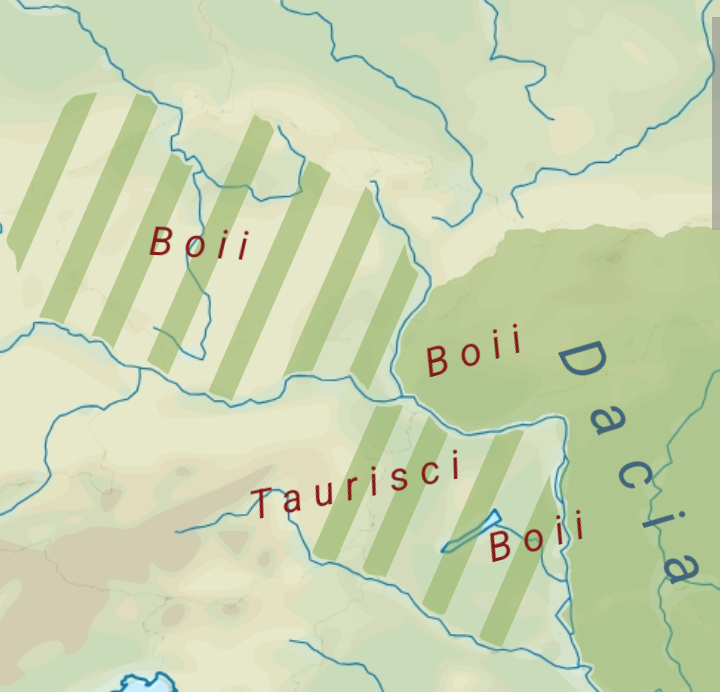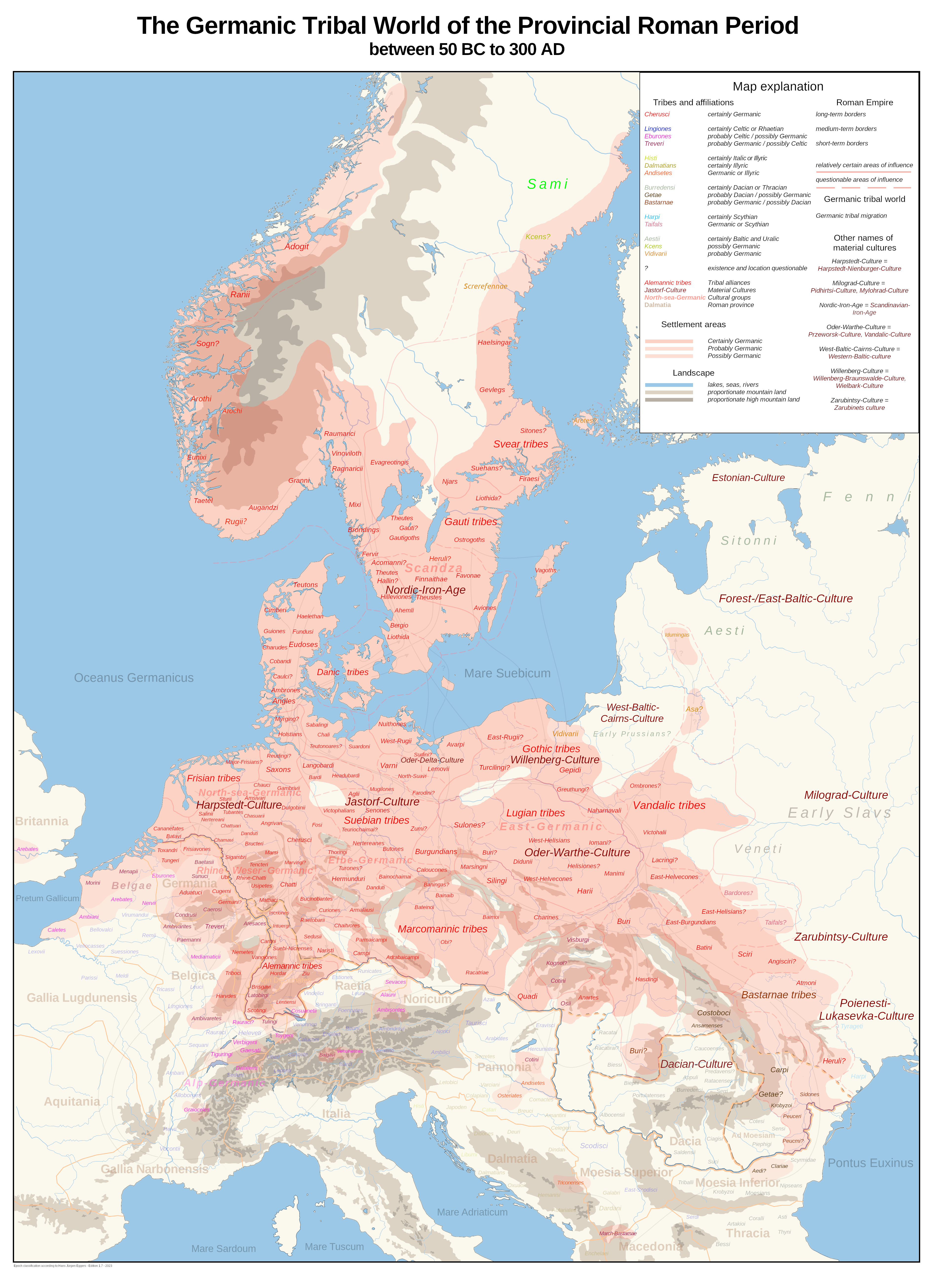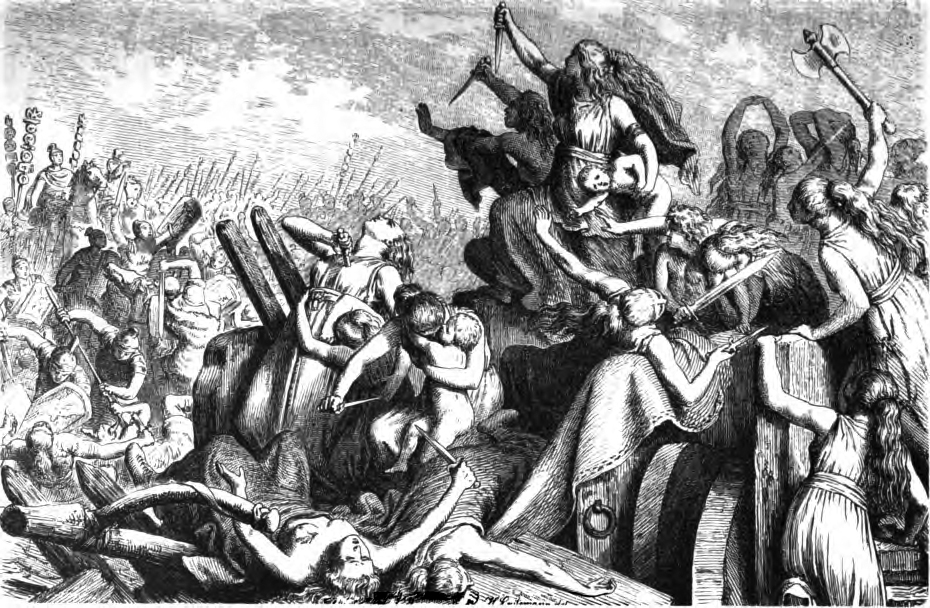|
Taurisci
The Taurisci were a federation of Celtic tribes who dwelt in today's Carinthia and northern Slovenia (Carniola) before the coming of the Romans (c. 200 BC). According to Pliny the Elder, they are the same as the people known as the Norici. Etymology The etymology of the name is disputed. ''Taurisci'' may stem from a root meaning 'mountain' or 'high rock', although it has been demonstrated that it is not related to the neighbouring '' Tauern'' mountain. Another proposed etymology is the Celtic root ''*'' 'bull' (see Gaulish ''taruos''). History Affiliated with the Celto-Ligurian Taurini, the Taurisci settled on the upper Sava river after their defeat at the Battle of Telamon in 225 BC. Following in the wake of the Boii, they migrated to northern Italia and the Adriatic coast. The Greek chronicler Polybius (ca. 203–120 BC) mentioned Tauriscian gold mining in the area of Aquileia. Along with the troops of the Roman Republic, they were defeated by invading Germanic Cimbr ... [...More Info...] [...Related Items...] OR: [Wikipedia] [Google] [Baidu] |
Boii
The Boii (Latin language, Latin plural, singular ''Boius''; ) were a Celts, Celtic tribe of the later Iron Age, attested at various times in Cisalpine Gaul (present-day Northern Italy), Pannonia (present-day Austria and Hungary), present-day Bavaria, in and around present-day Bohemia (after whom the region is named in most languages; comprising the bulk of today's Czech Republic), parts of present-day Slovakia and Poland, and Gallia Narbonensis (located in modern Languedoc and Provence). In addition, the archaeological evidence indicates that in the 2nd century BC Celts expanded from Bohemia through the Kłodzko Valley into Silesia, now part of Poland and the Czech Republic. They first appear in history in connection with the Campaign history of the Roman military#Celtic invasion of Italia (390–387 BC), Gallic invasion of northern Italy, 390 BC, when they made the Etruscan civilization, Etruscan city of Felsina their new capital, Bologna, Bononia (Bologna). After a series of ... [...More Info...] [...Related Items...] OR: [Wikipedia] [Google] [Baidu] |
Battle Of Noreia
The Battle of Noreia, in 113 BC, was the opening battle of the Cimbrian War fought between the Roman Republic and the migrating Proto-Germanic tribes, the Cimbri and the Teutons (Teutones). It ended in defeat, and near disaster, for the Romans. Prelude The Cimbri and Teutones left their home lands around the Baltic Sea in the Jutland peninsula and Southern Scandinavia. They travelled southeast and encountered the Scordisci, with whom they fought. Following their victory over the latter, they arrived at the Danube in Noricum (113 BC), which was home to the Taurisci, who were allied with Rome. Unable to repel these new invaders, the Taurisci appealed to Rome for assistance. The consul Gnaeus Papirius Carbo responded the following year, leading the legions into Noricum, where he took up a position on the heights near Aquileia. Battle Carbo ordered them to vacate the territory of the Taurisci at once. The Cimbri had heard many stories from other tribes about the fearsome power ... [...More Info...] [...Related Items...] OR: [Wikipedia] [Google] [Baidu] |
Pannonia Popolazioni Png
Pannonia (, ) was a province of the Roman Empire bounded on the north and east by the Danube, on the west by Noricum and upper Italy, and on the southward by Dalmatia and upper Moesia. It included the modern regions western Hungary, western Slovakia, eastern Austria, northern Croatia, north-western Serbia, northern Slovenia, and northern Bosnia and Herzegovina. Background In the Early Iron Age, Transdanubia was inhabited by the Pannonians or Pannonii, a collection of Illyrian tribes. The Celts invaded in the Late Iron Age and Gallo-Roman historian Pompeius Trogus writes that the Celts were met with heavy resistance from the locals and were not able to overrun the southern part of Transdanubia. Some tribes advanced as far as Delphi, with the Scordisci settling in Syrmia (279 BC) upon being forced to withdraw. The arrival of the Celts in Transdanubia disrupted the flow of amber from the Baltic Sea region, through the Amber Road, to the Illyrians. They founded many villages. T ... [...More Info...] [...Related Items...] OR: [Wikipedia] [Google] [Baidu] |
Tauern
The word ''Tauern'' () is German and originally meant 'high mountain pass' in the Austrian Central Alps, referring to the many bridleways and passes of the parallel side valleys of the River Salzach that cut into the mountain ranges. From the Middle Ages, when mining reached its heyday, the word ''Tauern'' was also used to name the corresponding ranges. The name has survived in many local placenames today. Etymology The derivation of the name ''Tauern'' has been variously ascribed: * One view is that the name ''Tauern'' is an old substrate word (''*taur-'' for 'mountain‚ mountain pass, crossing'), which passed directly (less probable) or via the Slavic language (more likely) into German. (The name ''Tauern'' is probably pre-Slavic, but there is also a common Slavic word, ''tur-'' 'swelling, ridge, elongated hillock', etc.). * Another postulation is that the ''Tauern'' is the only mountain range that has kept its pre-Slavic name in Carinthia as it passed down the gener ... [...More Info...] [...Related Items...] OR: [Wikipedia] [Google] [Baidu] |
Cimbri
The Cimbri (, ; ) were an ancient tribe in Europe. Ancient authors described them variously as a Celtic, Gaulish, Germanic, or even Cimmerian people. Several ancient sources indicate that they lived in Jutland, which in some classical texts was called the Cimbrian peninsula. There is no direct evidence for the language they spoke, though some scholars argue that it was a Germanic language, while others argue that it was Celtic. Together with the Teutones and the Ambrones, they fought the Roman Republic between 113 and 101 BC during the Cimbrian War. The Cimbri were initially successful, particularly at the Battle of Arausio, in which a large Roman army was routed. They then raided large areas in Gaul and Hispania. In 101 BC, during an attempted invasion of the Italian peninsula, the Cimbri were decisively defeated at the Battle of Vercellae by Gaius Marius, and their king, Boiorix, was killed. Some of the surviving captives are reported to have been among the rebellious gl ... [...More Info...] [...Related Items...] OR: [Wikipedia] [Google] [Baidu] |
Aquileia
Aquileia is an ancient Roman city in Italy, at the head of the Adriatic at the edge of the lagoons, about from the sea, on the river Natiso (modern Natisone), the course of which has changed somewhat since Roman times. Today, the city is small (about 3,500 inhabitants), but it was large and prominent in classical antiquity as one of the world's largest cities with a population of 100,000 in the second century AD and is one of the main archaeological sites of northern Italy. In late antiquity the city was the first city in the Italian Peninsula to be sacked by Attila the Hun. It is currently a (municipality) in the Regional decentralization entity of Udine, Friuli-Venezia Giulia. History Classical Antiquity Roman Republic Aquileia was founded as a colony by the Romans in 180/181 BC along the Natiso River, on land south of the Julian Alps but about north of the lagoons. The colony served as a strategic frontier fortress at the north-east corner of transpadane Ital ... [...More Info...] [...Related Items...] OR: [Wikipedia] [Google] [Baidu] |
Battle Of Telamon
The Battle of Telamon was fought between the Roman Republic and an alliance of Celtic tribes in 225 BC. The Romans, led by the consuls Gaius Atilius Regulus and Lucius Aemilius Papus, defeated the Celts led by the Gaesatae kings Concolitanus and Aneroëstes. This removed the Celtic threat from Rome and allowed the Romans to extend their influence over northern Italy. Background Mobilisation Rome had been at peace with the tribes of Cisalpine Gaul, the area along the Po valley in northern Italy, since inconclusive skirmishing ceased in 238 BC. Indeed, when a force of Transalpine Celts had crossed the Alps into Italy in 230 BC, it had been the Boii of Cisalpine Gaul who had repelled them. The Romans had sent an army but found that it was not needed. However, when the Romans partitioned the formerly-Celtic territory of Picenum in 234 BC, they created resentment among its neighbours, the Boii and the Insubres. This was deepened in 232 BC when the Romans passed a law allocatin ... [...More Info...] [...Related Items...] OR: [Wikipedia] [Google] [Baidu] |
Iapydes
The Iapodes (or Iapydes, Japodes; ; ) were an ancient people who dwelt north of and inland from the Liburnians, off the Adriatic coast and eastwards of the Istrian peninsula. They occupied the interior of the country between the ''Colapis'' (Kupa) and ''Oeneus'' ( Una) rivers, and the Velebit mountain range (''Mons Baebius'') which separated them from the coastal Liburnians. Their territory covered the central inlands of modern Croatia and Una River Valley in today's Bosnia and Herzegovina. Archaeological documentation confirms their presence in these countries at least from 9th century BC, and they persisted in their area longer than a millennium. The ancient written documentation on inland Iapodes is scarcer than on the adjacent coastal peoples (Liburni, Delmatae, etc.) that had more frequent maritime contacts with ancient Greeks and Romans. The Iapodes had their maximal development and territorial expansion from the 8th to 4th centuries BC. They settled mostly in inland mounta ... [...More Info...] [...Related Items...] OR: [Wikipedia] [Google] [Baidu] |
Sava
The Sava, is a river in Central Europe, Central and Southeast Europe, a right-bank and the longest tributary of the Danube. From its source in Slovenia it flows through Croatia and along its border with Bosnia and Herzegovina, and finally reaches Serbia, feeding into the Danube in its capital, Belgrade. The Sava is long, including the Sava Dolinka headwater rising in Zelenci, Slovenia. It is the largest List of tributaries of the Danube, tributary of the Danube by volume of water, and the second-largest after the Tisza in terms of catchment area () and length. It drains a significant portion of the Dinaric Alps region, through the major tributaries of Drina, Bosna (river), Bosna, Kupa, Una (Sava), Una, Vrbas (river), Vrbas, Lonja, Kolubara, Bosut (river), Bosut and Krka (Sava), Krka. The Sava is one of the longest rivers in Europe and among the longest tributaries of another river. The population in the Sava River basin is estimated at 8,176,000, and is shared by three capit ... [...More Info...] [...Related Items...] OR: [Wikipedia] [Google] [Baidu] |
Carni
The Carni (Greek: Καρνίοι) were a tribe of the Eastern Alps in classical antiquity of Celtic language and culture, settling in the mountains separating Noricum and Venetia. They probably gave their name to Carso, Carnia, Carinthia, and Carniola. History They are usually considered a Gaulish tribe, although some associate them with the Venetic peoples, a group closely related to but probably distinct from the Celts. Their area of settlement isn't known with precision. Strabo confines them to the mountains, while Ptolemy assigns them two cities near the Adriatic coast. They are likely eponymous of the regions of Carnia, Carniola and Carinthia.Sir William Smith (ed.), ''Dictionary of Greek and Roman geography'', Volume 1p. 522/ref> The first historical date related to the arrival of the Carni in "Akileja" is 186 BC, when some 50,000 Carni, composed of armed men, women and children, descended towards the plains (in which they previously used to winter) and on a hill t ... [...More Info...] [...Related Items...] OR: [Wikipedia] [Google] [Baidu] |
Carniola
Carniola ( ; ; ; ) is a historical region that comprised parts of present-day Slovenia. Although as a whole it does not exist anymore, Slovenes living within the former borders of the region still tend to identify with its traditional parts Upper Carniola, Lower Carniola (with the sub-part of White Carniola), and to a lesser degree with Inner Carniola. In 1991, 47% of the population of Slovenia lived within the borders of the former Duchy of Carniola. Overview The March of Carniola was a state of the Holy Roman Empire, established as an immediate territory in the 11th century. From the second half of the 13th century it was ruled by the Habsburgs and its capital was Ljubljana (Laibach); previous overlords had their seats in Kranj (Krainburg) and Kamnik (Stein), which are therefore sometimes referred to as its earlier capitals. In the 14th century the Duchy of Carniola was declared, a status which was formally recognised in the 16th century. As a hereditary possession of the H ... [...More Info...] [...Related Items...] OR: [Wikipedia] [Google] [Baidu] |
Teutons
The Teutons (, ; ) were an ancient northern European tribe mentioned by Roman authors. The Teutons are best known for their participation, together with the Cimbri and other groups, in the Cimbrian War with the Roman Republic in the late second century BC. Some generations later, Julius Caesar compared them to the Germanic peoples of his own time, and used this term for all northern peoples located east of the Rhine. Later Roman authors followed his identification. However, there is no direct evidence about whether or not they spoke a Germanic language. Evidence such as the tribal name, and the names of their rulers, as they were written up by Roman historians, indicates a strong influence from Celtic languages. On the other hand, the indications that classical authors gave about the homeland of the Teutones is considered by many scholars to show that they lived in an area associated with early Germanic languages, and not in an area associated with Celtic languages. Name Th ... [...More Info...] [...Related Items...] OR: [Wikipedia] [Google] [Baidu] |







